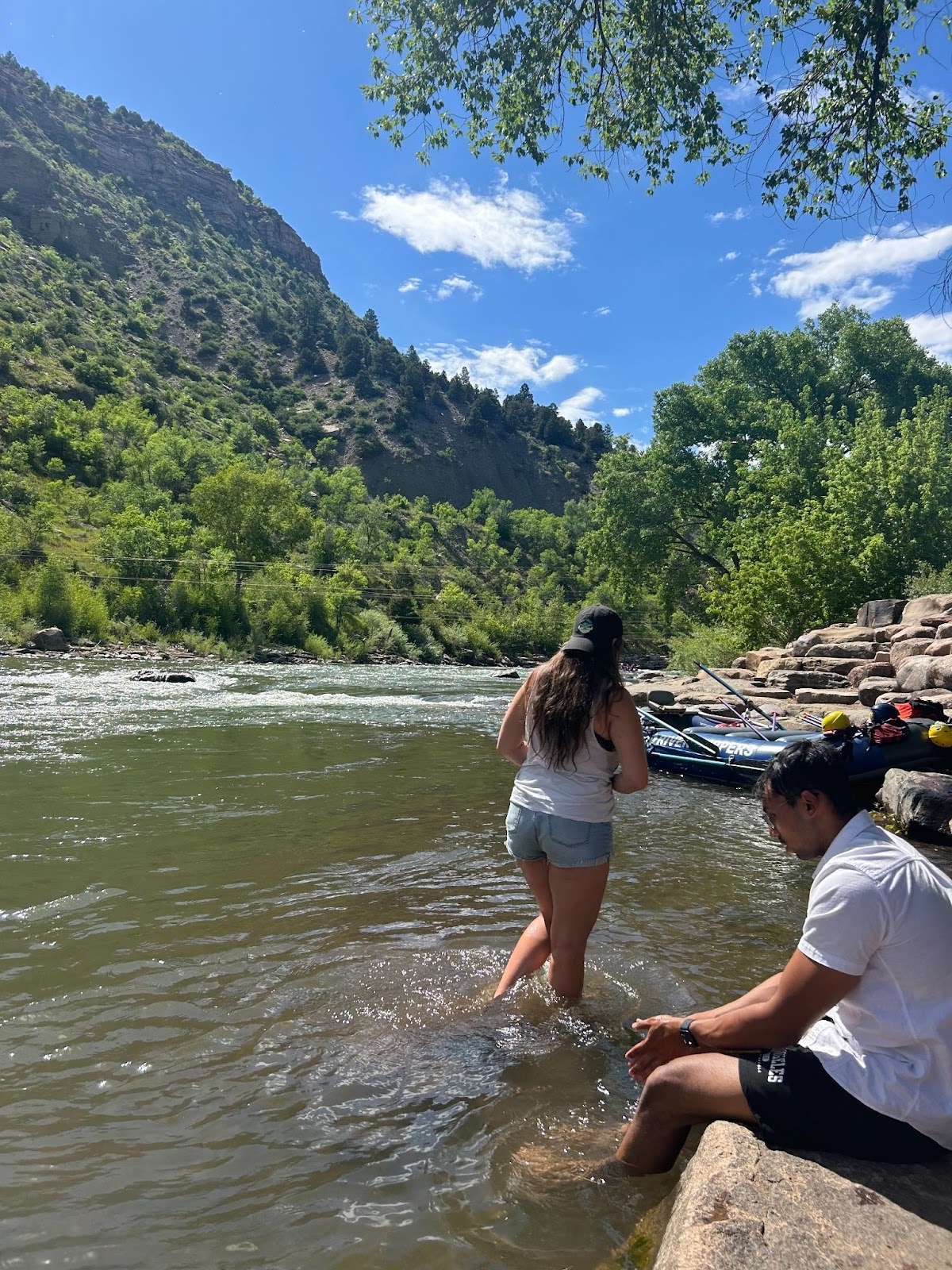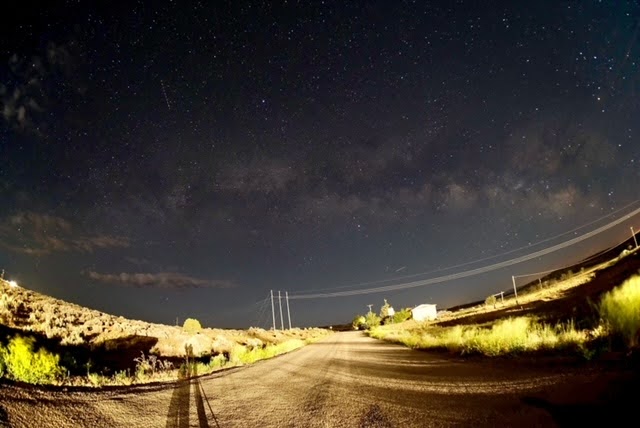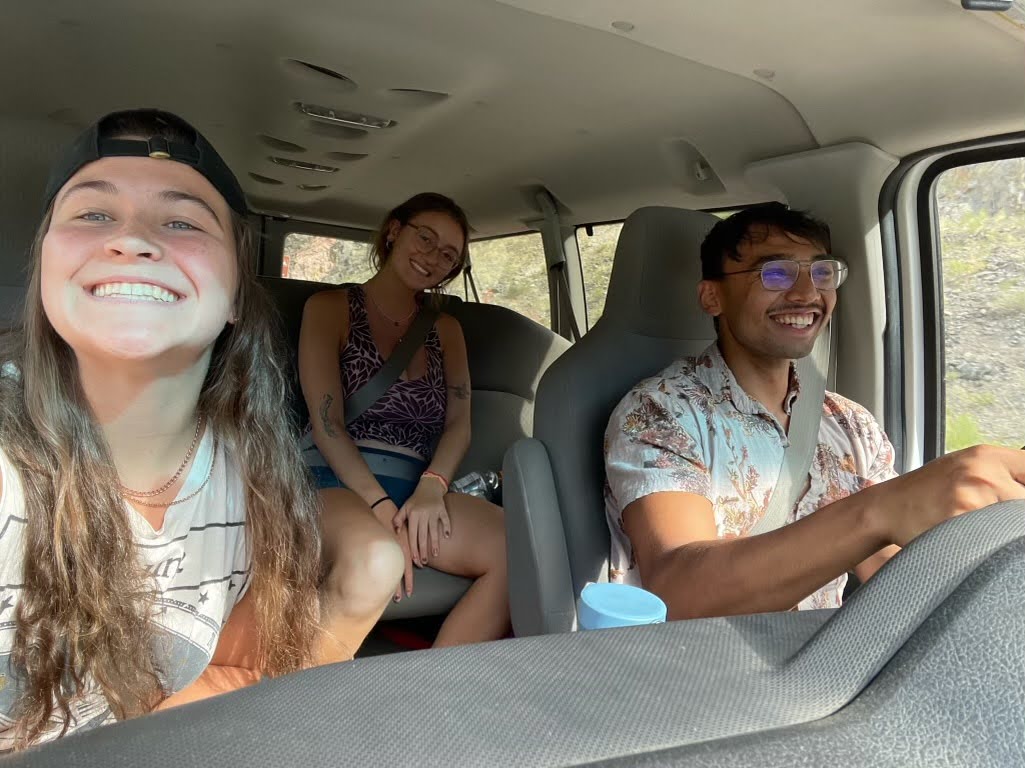2025 Research Projects
Four reseachers for State of the Rockies set out to find out more about dark skies in the summer of 2024. They wanted to learn more about how dark skies affect communities in the American Southwest, and how they are changing over time. Since last summer, they have put together a series of projects, which we present below. All of their projects will be featured in the Fall 2025 edition of the Anthropogenic, the State of the Rockies' annual publication.
Alison Mueller-Hickler, Mustafa Sameen, Megan O'Brien and Natasha Thomas collected extensive data, arranged numerous interviews and traveled hundreds of miles last year to determine the impact of changing dark skies on various communities. The culmination of their work can be viewed below through their research projects.
Explore below to see what they discovered!
Sites that Alison mapped for her project in the Colorado Springs area, showing her own measurements of light pollution.
This past summer, Alison researched the relationship between the amount of artificial light emitted and development. She set out to study some of the fastest growing cities in the Rocky Mountain West: Phoenix, Albuquerque, and Colorado Springs while mapping dozens of sites in GIS, taking pictures during the day and returning for light measurements and more pictures at night. Sometimes she finished a day's work at 12:30 am.
Click here to view Alison's research paper.

Mustafa initially wanted to study the impact of light pollution on people around the Bears Ears National Monument. He is interested in the cultural practices of indigenous people centered around the stars.
After his first trip in the field his research shifted, and he spent the summer surveying Native people on reservations as well as tourists visiting semi-close to the monument. His survey focused on peoples’ connection to the stars. He asked if respondents observed the night sky frequently, if they had seen a change in the night sky visibility, and if light pollution had impacted their activities, among other questions. Additionally, he asked for demographic information in order to analyze differences in how varying age groups think about the night sky. He determined that a lot of people did not realize night sky visibility has changed in many areas and there could be more change in the future.
Mustafa found that because many tribes' cultural practices include many oral storytelling traditions centering dark skies and celestial bodies, the loss of dark skies is incredibly harmful to the tribes. Light pollution also affects wildlife and plant-pollinator relationships. Increase in light pollution in the coming years will lead to hundreds of thousands of dollars of annual losses coming from tourism in the Bears Ears area, because dark skies are what draw many people in. He suggests integrating responsible light practices through community-led initiatives in order to protect cultural practices and ecological relationships.
Click here to view Mustafa's research project.
Megan's research focused on predicting possible future light pollution in towns within the Bears Ears National Monument's vicinity. She collected data from the towns of Blanding, Monticello, and Moab, taking photos while visiting the towns and comparing them to historical photos unearthed from local libraries. Megan also collected light measurements to create a grid of data points in order to measure where and how intense light pollution was. She pored through VIIRS (Visible Infrared Imaging Radiometer Suite) data to find the brightest artificially lit sites near Bears Ears as seen via satellite. She investigated the biggest threats to Bears Ears’ dark skies. Finally, she interviewed residents of the towns about how they construed the significance of the stars.

Megan ultimately concluded that light pollution has risen from the 1950s to 2024 in all three towns. The areas with high concentrations of oil and gas flarings had the largest amount of light pollution that could be read through VIIRS scans, apart from the centers of the cities. This increase in light pollution threatens the dark sky visibility in Bears Ears National Monument and the towns that surround it. Increased amounts of visitors to the nearby Arches National Park from the 1950s to present day are directly connected to the amount of light pollution increase, because of an increase in development to support more people.
Locals to the Bears Ears area reported that they had not noticed a change in the night sky over time, probably due to the gradual change. On the other hand, those who had moved to the area from larger cities felt concern that they could not see the stars to their fullest potential. Both locals and those who had moved expressed that preserving dark skies from light pollution was important to them. Megan's research and findings helped the Inter-Tribal Coalition of Bears Ears National Monument decide to distinguish Bears Ears National Monument as a Dark Skies Designated Area, which will hopefully help to preserve views of dark skies in the future.
Click here to view Megan's research paper.
The Bears Ears Inter-Tribal Coalition wanted to understand how their community outreach was doing in terms of the new co-management plan; essentially, how many people knew about it around Bears Ears. Natasha undertook this project, and surveyed people near the monument. She asked them if they had a tribal affiliation, if they knew about the changes in size of the Monument, and if they had participated in the meetings held for public input on managing the area.
Natasha traveled to the towns of Bluff and Blanding right next to the Monument, as well as areas closer to the Four Corners. She conducted surveys on the Southern Ute, Mountain Ute, and Navajo reservations. Natasha interviewed people in and outside grocery stores, at gas stations, in trading posts, and outside on the street. She spoke with many Native people, Mormons, and other residents of the Southeast Utah region.

Through Natasha's interviews, the theme of the complexity in identities and interests in the area became apparent. Oil companies looking to profit off the land, native people looking to protect it, yet other native people looking for a job (with the oil companies if needed), Mormons looking to make use of the land they believe is there for their use, ATV enthusiasts looking for adrenaline-filled rides over the rocky land… Natasha heard it all. Through a deep exploration of the history of different peoples in the San Juan Valley, she wrote a long-form journalism story about all these different perspectives coming together in one place, the fight for the varied resources Bears Ears offers.
Click here to be taken to the Anthropogenic 2024 issue. Natasha's piece is on page 87.
show all / hide all


